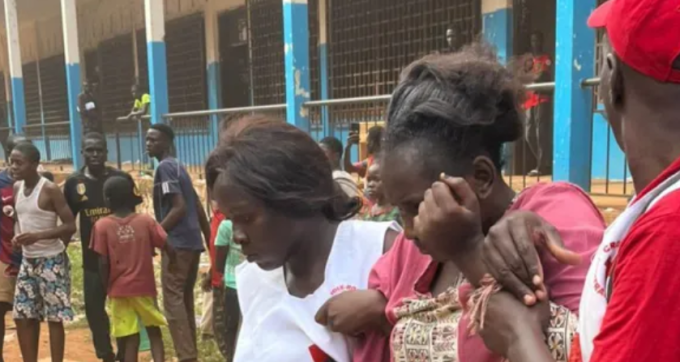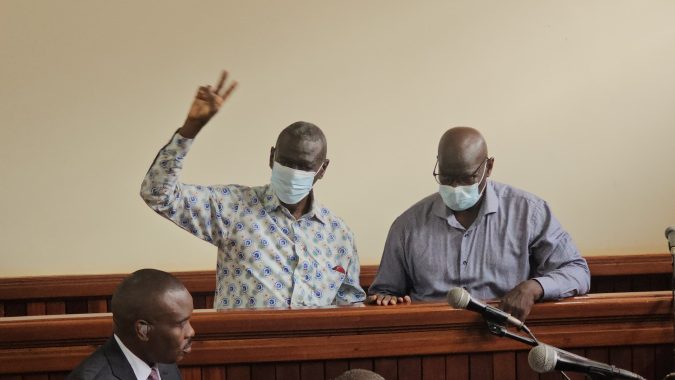The Judiciary has attributed the high levels of case backlog across the Country to under-staffing and limited funding ,currently standing at 37% .
According to the Chief justice Alfonse Owiny-Dollo in the this financial year 2020 -2021,the commercial court alone had over 6094 unresolved cases estimated at ugx 5 million.
Owiny-Dollo was speaking during the first ever Judiciary Annual Performance Report at the Judiciary Headquarters in Kampala on Monday.
Owiny-Dollo says the Judicial Officers were over stretched and couldn’t dispose of the cases in time. He explained that because of the increased population of Uganda estimated to be over 40 million people, the ratio of the Judicial officers to this population for example at Supreme Court is that one Judge to 5 million people, Court of Appeal one to 3 million people, High Court one Judge to 793,103 people and at the Magistrates’ level each has to attend to a population of 158,075 people.
The Chief Justice further noted that the backlog level as of June 30th 2021 stood at 51,748 cases which he attributed to inadequate funding and staffing of his institution.
In the report, the approved budget for FY 2020/21 was UGX 199,077,590,548 compared to UGX 181,623,481,000 for
FY 2019/20. In the period under review, a Supplementary Budget of UGX 22,514,276,353 was received leading to a revised budget of UGX 221,591,866,901. The Supplementary Budget was earmarked for retirement benefits of judicial officers in accordance with the Administration of the Judiciary Act 2020, domestic and utility arrears and disposal of presidential and parliamentary election petitions.
A total of UGX. 208,780,683,306 out of the UGX. 215,502,421,726 released was spent, thus contributing to
the 96.6% absorption rate.
In the FY 2020/21, Courts disposed of 156,875 cases out of a caseload of 317,929. This accounted for
49% of all cases in the system. The 156,875 cases disposed of translated into a 20% improvement in
case disposal from 130,869 cases disposed of in the FY 2019/20.
In addition,he says the Courts recorded a 4% increase in case registration from 159,543 cases in FY 2019/20 to 165,347 cases in FY 2020/21.
In FY 2021/22, the Judiciary promised to focus on increasing the staffing levels to 45%; increasing access to
Judiciary services through construction of the Archive; and expanding the Judiciary Training Institute
(JTI), the Court of Appeal buildings at Gulu and Mbarara, the High Court Circuits at Soroti, Hoima,
Rukungiri and Mpigi, the Magistrate’s Courts at Karenga, Patongo, Abim, Alebtong, Budaka as well as the
Justice Centres under JLOS at Bunyagabu, Omoro, Lwengo, Kibaale, Kyegegwa and Rakai. The Judiciary
will complete the construction of the Justice Centres under JLOS at Buhweju, Sheema, Sembabule, Kole,
Kyegegwa, Rakai and Serere.
The Chief justice has recommendedthe recruitment plan for the financial year 2021/2022 which provides for 697 judicial officers and 958 Support Staff should be effectively and followed in a timely manner if the citizens are to get effective justice and have courts at all levels starting from sub-counties.
In addition, the Judiciary said they will be launching and operationalising the 1st Phase of the Electronic Court Case
Management Information System (ECCMIS) in 18 Court stations.
These include: The Supreme Court, the Court of Appeal/Constitution Court, the seven Divisions of the High Court, one High Court at the Circuit,five Chief Magistrates Courts and three Magistrates Grade 1 Courts.
Due to the effects of the COVID-19 pandemic, the Judiciary will roll-out more video conferencing systems to seven court stations and prison facilities as well as digital court recording and transcription to four court stations to facilitate judicial officers in timely determination of cases.
In Uganda, a case is considered to be in backlog when it spends more than two years in the court system.












